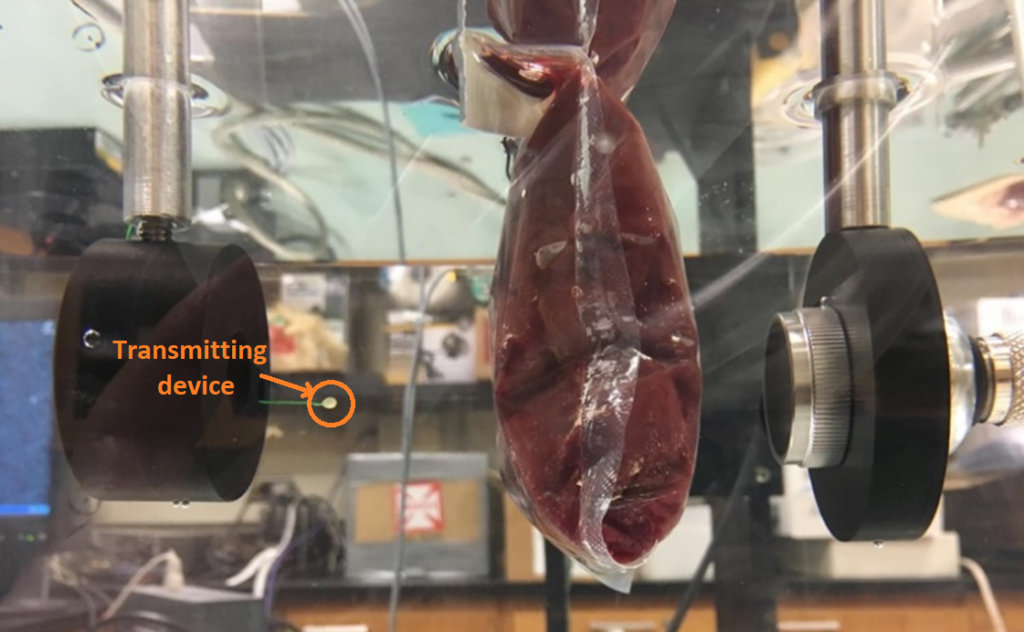Gizem Tabak – tabak2@illinois.edu
Michael Oelze – oelze@illinois.edu
Andrew Singer – acsinger@illinois.edu
University of Illinois at Urbana-Champaign
306 N Wright St
Urbana, IL 61801
Popular version of paper 4aSP4
Presented Thursday morning, May 16, 2019
177th ASA Meeting, Louisville, KY
Researchers at the University of Illinois at Urbana-Champaign have developed a fast, wireless communication alternative that also has biomedical implications. Instead of using radio frequency (RF) to transmit signals, the team is using ultrasonic waves to send signals at high enough data rates to transmit video through animal or human tissue.
The team of electrical and computer engineering professors Andrew Singer and Michael Oelze and graduate researcher Gizem Tabak have achieved a transmission rate of 4 megabits per second through animal tissue with 2-mm transmitting devices. This rate is high enough to send high definition video (3 Mbps) and 15 times faster than that RF waves can currently deliver.

Figure 1 – Experimental setup for streaming at 4Mbps through 2” beef liver
The team is using this approach for communicating with implanted medical devices, like those used to scan tissue in a patients’ gastrointestinal (GI) tract.
Currently one of two methods are used to image the GI tract. The first is video endoscopy, which involves inserting a long probe with a camera and light down the throat to take real-time video and send it to an attached computer. This method has limitations in that it cannot reach the midsection of the GI tract and is highly invasive.
The second method involves a patient swallowing a pill that contains a mini camera that can take images throughout the tract. After a day or so, the pill is retrieved, and the physician can extract the images. This method, however, is entirely offline, meaning there is no real-time interaction with the camera inside the patient.
A third option uses the camera pill approach but sends the images through RF waves, which are absorbed by the surrounding tissue. Due to safety regulations governing electromagnetic radiation, the transmitted signal power is limited, resulting in data rates of only 267 kilobits per second.
The Illinois team is proposing to use ultrasound, a method that has already proven safe for medical imaging, as a communication method. Having achieved data rates of 4 Mbps with this system through animal tissue, the team is translating the approach to operate in real-time for use in the human body.
Pairing this communication technology with the camera pill approach, the device not only could send real-time video, but also could be remotely controlled. For example, it might travel to specific areas and rotate to arbitrary orientations. It may even be possible to take tissue samples for biopsy, essentially replacing endoscopic procedures or surgeries through such mini-remote controlled robotic devices.
